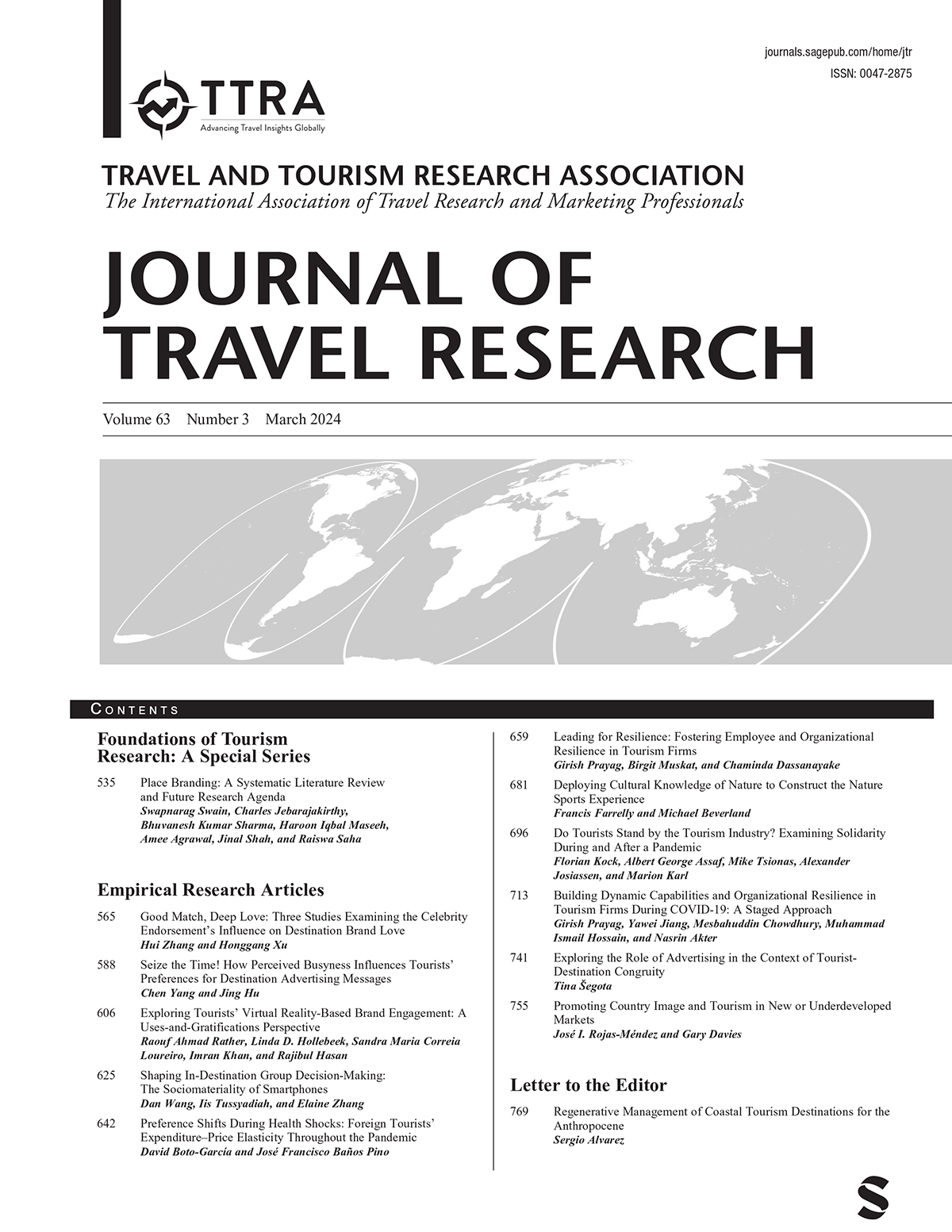解读黑暗遗产遗址的身份:一种皮尔海符号学方法论
IF 7
2区 管理学
Q1 HOSPITALITY, LEISURE, SPORT & TOURISM
引用次数: 1
摘要
黑暗遗址的共同象征和意识形态构建了集体国家命运的叙事。游客在这些网站上的体验必然涉及解码符号和符号。阐释实践中的共同性根植于“附带知识”,形成了地方的同一性。然而,文化物质性、集体身份和符号学一直被黑暗旅游学术界所忽视。在更广泛的旅游研究中,符号学的尝试缺乏方法论的同质性和一致性,将查尔斯·皮尔斯的符号学理论转化为实践经验方法的努力很少。本研究介绍了一种实用的、系统的、可复制的符号学方法,用于解读黑暗遗产遗址的身份。这种方法论围绕着三个相互关联的概念:符号、附属知识和符号与其动态对象的关系。作者认为,通过间接知识的过滤来解读符号的索引、象征和象征功能,可以确保一个系统的意义形成过程,并揭示微妙的影响。本文章由计算机程序翻译,如有差异,请以英文原文为准。
Reading the Identity of Dark Heritage Sites: A Peircean Semiotic Methodology
Shared symbolism and ideology at dark heritage sites construct the narrative of a collective national destiny. Visitors’ experiences with such sites necessarily involve decoding signs and symbols. The commonality in interpretative practices is rooted in “collateral knowledge” and forms the identity of place. Yet, cultural materiality, collective identities, and semiotics have been overlooked by dark tourism academia. In broader tourism studies, semiotic attempts lack methodological homogeneity and congruence and efforts to transpose Charles Peirce’s semiotic theory into practical experiential methodologies are scarce. This study introduces a practical, systematic, and replicable semiotic methodology for reading the identity of dark heritage sites. This methodology revolves around three interconnected Peircean concepts: the sign, the collateral knowledge, and the sign’s relationship to its dynamical object. It is proposed that reading the indexical, iconical, and symbolical functions of signs through the filter of collateral knowledge can ensure a systematic meaning-making process and reveal subtle influences.
求助全文
通过发布文献求助,成功后即可免费获取论文全文。
去求助
来源期刊

Journal of Travel Research
HOSPITALITY, LEISURE, SPORT & TOURISM-
CiteScore
18.90
自引率
9.00%
发文量
66
期刊介绍:
The Journal of Travel Research (JTR) stands as the preeminent, peer-reviewed research journal dedicated to exploring the intricacies of the travel and tourism industry, encompassing development, management, marketing, economics, and behavior. Offering a wealth of up-to-date, meticulously curated research, JTR serves as an invaluable resource for researchers, educators, and industry professionals alike, shedding light on behavioral trends and management theories within one of the most influential and dynamic sectors. Established in 1961, JTR holds the distinction of being the longest-standing among the world’s top-ranked scholarly journals singularly focused on travel and tourism, underscoring the global significance of this multifaceted industry, both economically and socially.
 求助内容:
求助内容: 应助结果提醒方式:
应助结果提醒方式:


